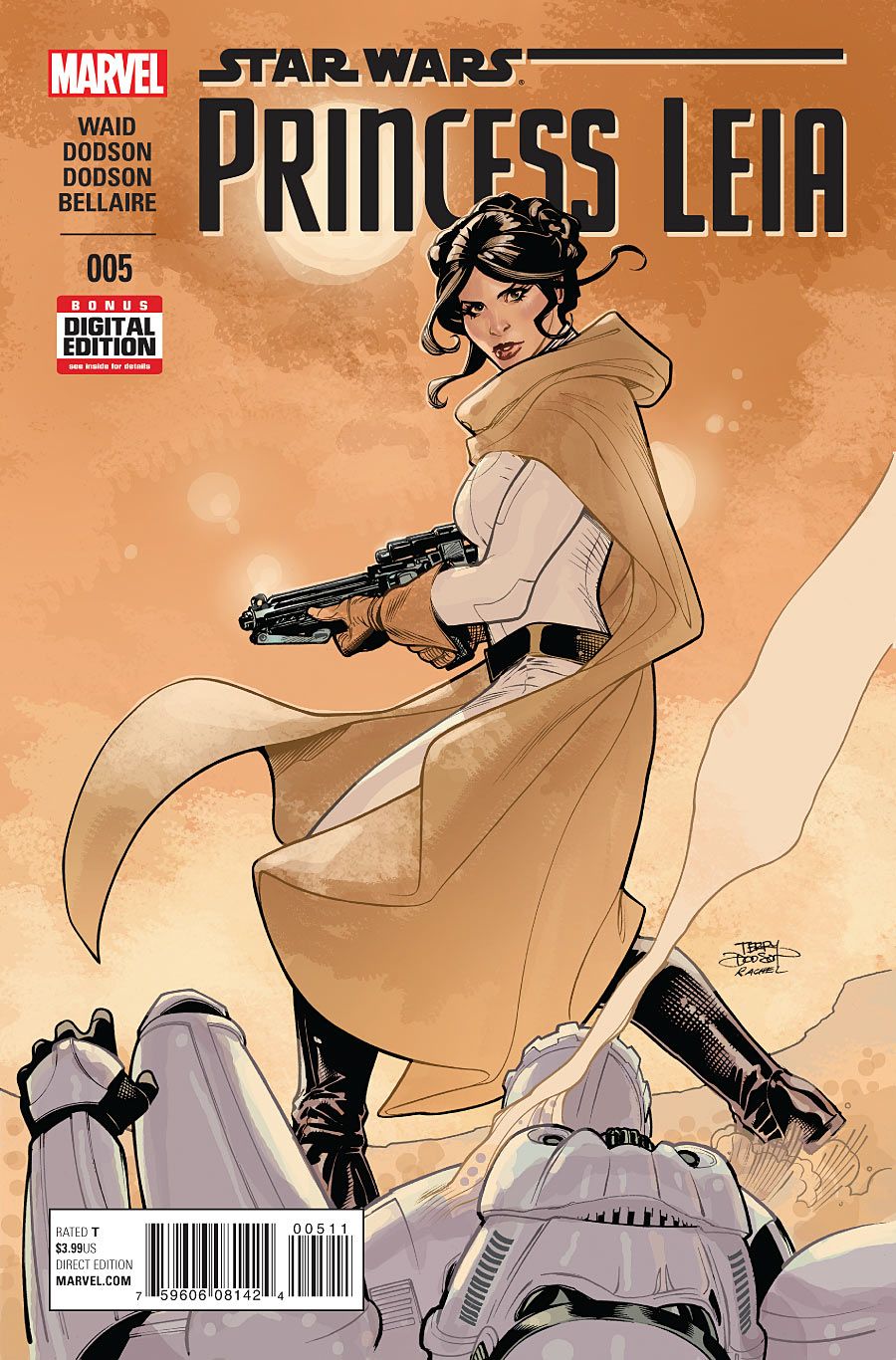Writer Mark Waid left readers in suspense at the end of the previous issue, with Princess Leia offering herself up in exchange for a fellow Alderaanian in Imperial custody. In the opening pages of "Princess Leia" #5, Waid reveals that the Princess is every bit as resourceful -- perhaps moreso -- than her compatriots, Han Solo and Luke Skywalker.
Waid keeps the Empire in sight but makes Princess Leia's adventure a very personal one, momentarily narrowing the scope of galaxy. With her plans seemingly crumbling around her, Leia makes a desperate plea tinged with farewell that Waid transforms into a rallying cry. In that speech, Waid makes it quite clear he understands what makes Leia tick and where her priorities lie. The story comes naturally from Waid, flowing like a lost scene or an unproduced special, as he balances the conflict in the stars with the bureaucracy and the accompanying frustration inherent in Leia's rescue mission: reuniting the Alderaanians and preserving the culture of her destroyed homeworld.
Dodson's art is slick and polished, not heavily photo-referenced but complete enough to make all of the characters recognizable and familiar. With his wife Rachel inking him, Terry Dodson does more with fewer lines, opening shapes and carving forms without etching detail into the panels. When detail is necessary, the Dodsons put in plenty, drawing set pieces that are sure to be familiar to "Star Wars" fans and visually describing the ships in battle. Dodson keeps the artwork clean and straightforward but, if there were a fault to be assigned, it would be that Dodson keeps the art comfortable, not boldly exploring the page or venturing into new territory. Some character shots seem lifted or prepped for marketing pieces, and almost all of the drawings of Nien Nunb are variations of the same pose, limiting any visual originality for everyone's favorite Sullustan co-pilot. Furthermore, Beon Beonel (a "Star Wars" name if ever there was one) has slippery anatomy, shifting from four fingers and a thumb to three within the scene he appears. Here, Dodson's open style works against him, dropping detail for form, but the form surrenders definition.
Working with the Dodsons, colorist Jordie Bellaire and letterer Joe Caramagna round out the visuals nicely. Bellaire hits Dodson's open art with unapologetic colors that happen to also be spot on. She even adds texture, giving R2-D2 some rust and some shine, truly conscribing the astromech droid with unmistakable familiarity. Caramagna's lettering is strong throughout the issue, from the dialogue on the surface of Espirion to the exclamations of reunited Alderaanians, as a simple word balloon cannot possibly contain the joy. Even Nien Nunb's words, albeit in an alien font, find the right spot and measure along the flow of the story nicely.
The key to Marvel's "Star Wars" comics has been the familiarity. Yes, topnotch talents with recognizable names (at least to comic fans) have been assigned to the books, but each of the titles has brought along a healthy dose of the familiar. Waid, Dodson, Dodson, Bellaire and Caramagna do the same here and give readers a satisfying conclusion that wraps up this battle with style but reminds readers that one battle does not complete a war. Lando Calrissian takes the miniseries spotlight next with a different creative team, but I certainly wouldn't mind seeing this creative team come back for more adventures of Leia Organa.

